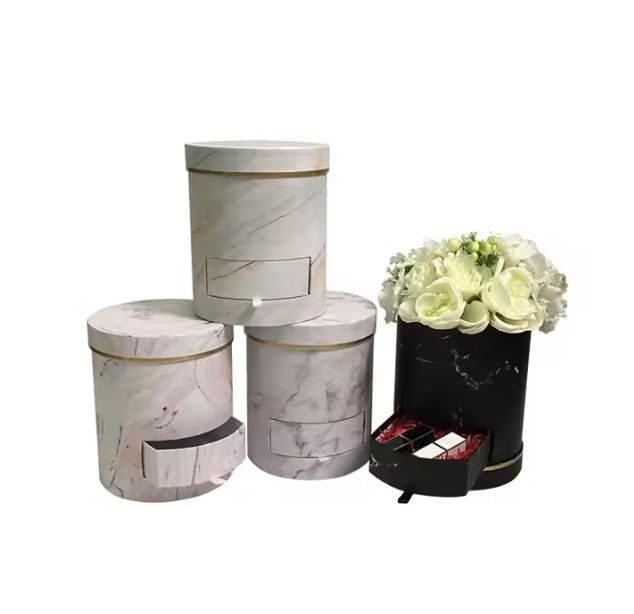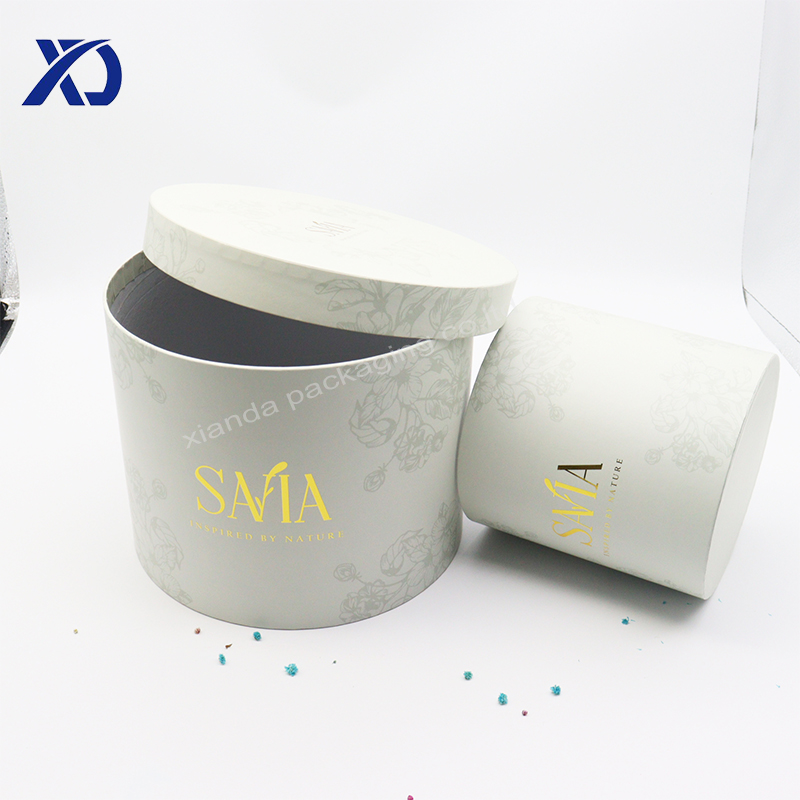- All
- Product Name
- Product Keyword
- Product Model
- Product Summary
- Product Description
- Multi Field Search
Views: 204 Author: XianDa Publish Time: 2024-12-26 Origin: Site

Content Menu
● What Do You Line a Flower Box With?
● Materials for Lining Flower Boxes
>> 4. Burlap
● Creative Ideas for Flower Box Liners
● Maintaining Your Lined Flower Box
● Choosing the Right Soil for Your Lined Flower Box
● Selecting Plants for Your Lined Flower Box
● Troubleshooting Common Flower Box Issues
Flower boxes are a charming way to add color and life to your home's exterior or garden. However, to ensure the longevity of both your plants and the box itself, proper lining is essential. This comprehensive guide will explore various materials and methods for lining flower boxes, helping you create the perfect environment for your plants to thrive.
Before diving into the materials and methods, it's important to understand why lining your flower box is crucial:
1. Protects the box from moisture damage
2. Improves soil retention
3. Enhances drainage
4. Prevents soil from escaping through cracks
5. Extends the life of your flower box
There are several options available for lining your flower box. Let's explore each in detail:
Plastic liners are a popular choice due to their durability and water-resistant properties.
Pros:
- Excellent moisture barrier
- Long-lasting
- Easy to clean
Cons:
- May need additional drainage holes
- Not environmentally friendly
Landscape fabric, also known as weed barrier, is a breathable material that allows for proper drainage.
Pros:
- Allows water to drain naturally
- Prevents soil from escaping
- Durable and long-lasting
Cons:
- May not provide as strong a moisture barrier as plastic


Coco fiber liners are made from coconut husks and provide a natural, attractive option.
Pros:
- Biodegradable and eco-friendly
- Provides good insulation
- Attractive natural appearance
Cons:
- May degrade faster than synthetic options
- Can dry out quickly in hot weather
Burlap is an inexpensive, natural option that can work well for lining flower boxes.
Pros:
- Biodegradable
- Allows for good air circulation
- Inexpensive
Cons:
- May decompose relatively quickly
- Not as water-resistant as other options
Pond liner is a heavy-duty option that provides excellent water resistance.
Pros:
- Extremely durable
- Excellent water resistance
- Can be custom-fit to any size box
Cons:
- May be more expensive than other options
- Requires careful cutting for drainage holes
Now that we've covered the materials, let's go through the step-by-step process of lining your flower box:
1. Measure your flower box: Accurately measure the interior dimensions of your box, including length, width, and depth.
2. Cut your liner material: Cut the liner slightly larger than the measurements to allow for overlap.
3. Prepare the box: Clean the interior of the box and ensure it's dry.
4. Install the liner: Place the liner inside the box, smoothing out any wrinkles or air pockets.
5. Secure the liner: Use staples, adhesive, or tacks to secure the liner to the box, depending on the box material.
6. Create drainage holes: If using a non-porous liner like plastic or pond liner, create drainage holes in the bottom.
7. Trim excess material: Once secured, trim any excess liner material from the top edges of the box.
- Double-lining: For extra protection, consider using a combination of materials, such as landscape fabric over a plastic liner.
- Drainage layer: Add a layer of gravel or pebbles at the bottom of the box before adding soil to improve drainage.
- Regular maintenance: Check your liner periodically for wear and tear, replacing it as needed.

While traditional flower boxes are often made of wood or plastic, some gardeners and florists opt for eco-friendly paper boxes for temporary displays or events. If you're interested in sourcing flower paper boxes, consider the following suppliers:
1. EcoEnclose: Offers a range of eco-friendly packaging solutions, including customizable flower boxes made from recycled materials.
2. Nashville Wraps: Provides a variety of paper flower boxes and bags suitable for florists and gardeners.
3. Papermart: Offers a wide selection of flower boxes in various sizes and designs, including kraft paper options.
4. Floral Supply Syndicate: Specializes in floral packaging, including paper flower boxes and bouquet sleeves.
5. Blooms by the Box: Provides wholesale flower packaging supplies, including eco-friendly paper flower boxes.
When choosing a flower paper box supplier, consider factors such as customization options, minimum order quantities, and eco-friendly certifications.
While traditional liners are effective, you can also get creative with your flower box lining:
1. Repurposed materials: Use old shower curtains, plastic tablecloths, or even rubber mats as liners.
2. Moss-lined boxes: For a natural look, line your box with sheet moss before adding soil.
3. Fabric-lined boxes: Use outdoor fabric for a decorative touch, ensuring proper drainage.
4. Recycled plastic bottles: Cut plastic bottles into strips to create a DIY liner.
5. Cork lining: Use cork sheets for a unique, water-resistant liner option.
Remember to ensure any creative lining solutions still allow for proper drainage and plant health.
To keep your lined flower box in top condition:
1. Check drainage regularly: Ensure water is draining properly to prevent waterlogging.
2. Clean between plantings: Remove old soil and clean the liner when changing plants.
3. Inspect for damage: Look for tears or wear in the liner, replacing it if necessary.
4. Adjust soil levels: Add fresh soil as needed to maintain proper depth for plant roots.
5. Winter care: In colder climates, consider bringing boxes indoors or providing extra insulation during winter months.
The success of your flower box also depends on using the right soil. Here are some tips for selecting and preparing the perfect soil mix:
1. Use a high-quality potting mix: Avoid using garden soil, which can be too heavy and may contain pests or diseases.
2. Add organic matter: Mix in compost or well-rotted manure to improve soil structure and nutrient content.
3. Include perlite or vermiculite: These materials help improve drainage and aeration.
4. Consider water-retaining crystals: In hot climates, these can help reduce watering frequency.
5. Adjust pH as needed: Test your soil and adjust the pH based on the requirements of your chosen plants.
When choosing plants for your lined flower box, consider the following factors:
1. Sun exposure: Select plants that match the light conditions of your box's location.
2. Box depth: Ensure your box is deep enough for the root systems of your chosen plants.
3. Watering needs: Group plants with similar water requirements together.
4. Seasonal interest: Mix plants that bloom at different times for year-round color.
5. Thriller, filler, spiller: Use this design principle to create visually appealing arrangements.
Even with proper lining, you may encounter some issues with your flower box. Here are some common problems and solutions:
1. Poor drainage: If water isn't draining properly, check that drainage holes aren't blocked and consider adding more if necessary.
2. Root rot: This can occur if the soil stays too wet. Improve drainage and adjust watering practices.
3. Nutrient deficiency: Use a balanced, slow-release fertilizer to ensure plants have adequate nutrients.
4. Pest infestations: Regularly inspect plants for signs of pests and treat promptly with appropriate methods.
5. Frost damage: In cold climates, consider using frost cloth or bringing boxes indoors during severe weather.
Lining your flower box is a simple yet crucial step in creating a beautiful and long-lasting garden display. By choosing the right material and following proper installation techniques, you can ensure your plants have the best environment to thrive while protecting your flower box from damage. Whether you opt for traditional liners or get creative with alternative materials, the key is to provide adequate drainage and protection for both your plants and the box itself.

Remember, the choice of liner is just one aspect of successful flower box gardening. Proper soil selection, plant choice, and ongoing maintenance all play crucial roles in creating a stunning floral display. With the right combination of these elements, your lined flower box can become a beautiful and enduring feature of your home or garden.
1. Q: How often should I replace the liner in my flower box?
A: The frequency of replacement depends on the material used and environmental conditions. Generally, plastic liners can last several years, while natural materials like coco fiber may need replacement annually or bi-annually.
2. Q: Can I use plastic garbage bags to line my flower box?
A: While plastic garbage bags can be used as a temporary solution, they're not ideal for long-term use. They may not provide adequate drainage and can degrade quickly when exposed to sunlight and moisture.
3. Q: Is it necessary to line a metal flower box?
A: While metal flower boxes are naturally resistant to rot, lining them can still be beneficial. A liner can help insulate the soil, improve drainage, and prevent soil from staining or corroding the metal over time.
4. Q: How do I ensure proper drainage when lining a flower box?
A: If using a non-porous liner like plastic, make sure to puncture several drainage holes in the bottom. For porous liners like landscape fabric, ensure the material extends to cover the drainage holes in the box.
5. Q: Are there any plants that shouldn't be grown in lined flower boxes?
A: Most plants can thrive in properly lined flower boxes. However, plants with very deep root systems or those that are particularly sensitive to moisture levels may be better suited to in-ground planting or specialized containers.
Word count: 2,105 words